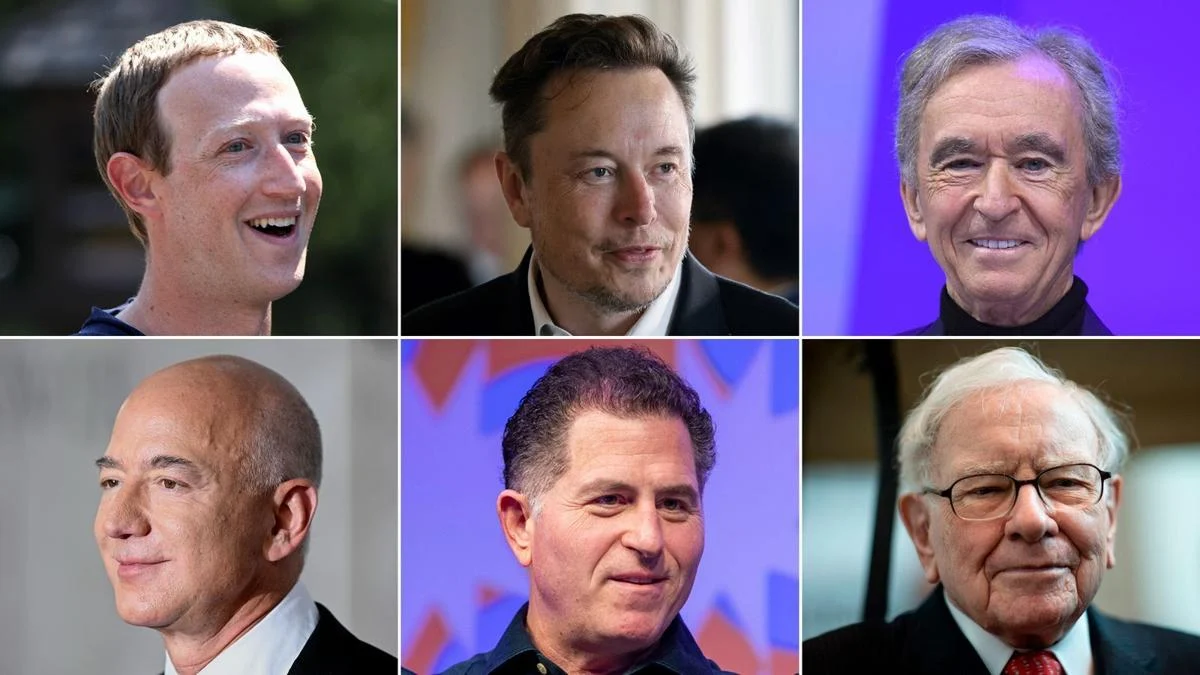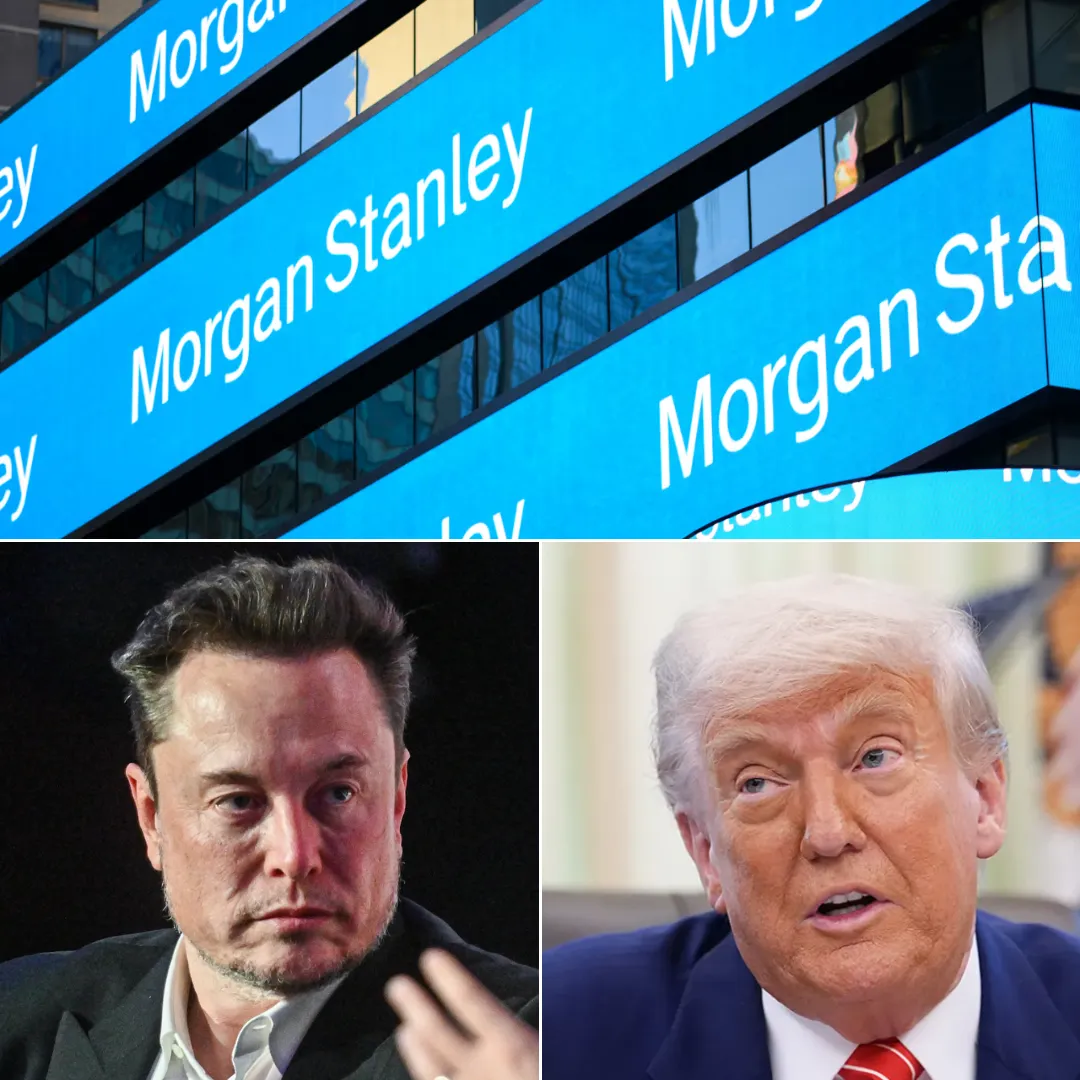
Last year, the ten richest people in the United States collectively earned an astonishing $365 billion, averaging roughly one billion dollars each day. This staggering accumulation of wealth occurred despite brief market downturns and widespread economic uncertainty.
The data, released in a recent analysis by Oxfam, lays bare the widening chasm between America’s ultra-wealthy and the working class. In stark contrast to the billionaires’ explosive gains, the average American worker earned just over $50,000 in 2023, a figure that pales in comparison and highlights the extreme inequality present in the nation’s economic landscape.
Oxfam’s findings revealed an almost incomprehensible disparity in income and wealth growth. The amount earned by the top 10 billionaires in a single year equates to what it would take an average American worker 726,000 years to accumulate.
This eye-popping statistic serves as a stark reminder of the imbalance in economic power. The list of these mega-wealthy individuals underscores the scale of their financial advantage and the power they wield in shaping economic and political discourse.

Jensen Huang, with a net worth of $115.1 billion, was among the billionaires who saw massive increases in their fortunes. The list also includes Bill Gates, whose wealth reached $115.2 billion.
Elon Musk, the world’s richest person and CEO of Tesla, was responsible for more than half of the total increase in wealth among the group, with his net worth soaring by $186. 1 billion during the same period. Musk’s meteoric rise places him on track to become the first trillionaire, a milestone that has generated both fascination and concern.
Mark Zuckerberg, CEO of Meta, along with Rob Walton, heir to Walmart’s retail empire, each saw their net worth increase by $38.7 billion. Warren Buffett, the legendary investor, earned $34.8 billion, while Jim Walton, another Walmart heir, gained $36.5 billion. However, not all billionaires shared in this wealth surge; Larry Page and Sergey Brin, co-founders of Google, reportedly saw their fortunes diminish over this period.
The timing of these revelations is critical as the Republican Party debates a costly tax bill widely criticized by bipartisan experts who argue it will exacerbate wealth inequality. This proposed legislation, a priority for former President Donald Trump, would reportedly deepen cuts to critical social welfare programs by nearly a trillion dollars while handing enormous tax breaks to the richest Americans.

Critics argue that the bill is designed to enrich the ultra-wealthy further, potentially creating the world’s first trillionaire while dismantling essential safety nets for ordinary citizens.
Rebecca Riddell, senior policy director for economic and racial justice at Oxfam America, emphasized in the report that billionaire wealth has grown astronomically while millions of ordinary Americans continue to struggle to make ends meet.
This imbalance paints a grim picture of the American dream, where prosperity is increasingly concentrated among a few. Oxfam’s methodology involved tracking the estimated changes in the wealth of the top ten billionaires according to Forbes’ real-time billionaire list, from the end of April 2024 to the end of April 2025.
Steve Ballmer’s wealth surged to $131.3 billion, underscoring the incredible scale of wealth accumulation within this elite group. Larry Ellison, the Oracle co-founder, reached a staggering $196.7 billion.

Jeff Bezos climbed to $216.8 billion, and Mark Zuckerberg’s net worth hit $219.6 billion. The economic gains of these individuals stand in sharp contrast to the broader American population’s experience, where wage stagnation and increasing living costs have become commonplace.
The ongoing legislative battles include discussions on whether to extend the 2017 Tax Cuts and Jobs Act, which significantly lowered taxes for high earners under Trump’s administration. The current bill aims to make all personal income tax cuts from 2017 permanent while temporarily reducing taxes on tips and overtime pay.
While the Congressional Budget Office estimates that the bill could boost resources for many American households on average, the benefits are far from evenly distributed. The poorest 10 percent of earners are projected to see a four percent reduction in resources by 2033, while the wealthiest 10 percent stand to gain a two percent increase due to lower taxes. This uneven impact intensifies debates about fairness and fiscal responsibility.
According to analysis from the Penn Wharton Budget Model, the bill is expected to increase the nation’s gross domestic product by half a percent over ten years and by 1.7 percent over thirty years.
These economic gains are predicted to result from higher savings rates and increased labor supply, incentivized by a weakened social safety net. Yet, the benefits disproportionately favor the highest earners, with the top 10 percent receiving approximately 65 percent of the bill’s total value.
Meanwhile, the bottom 20 percent of earners are anticipated to lose about $1,035 in 2026 due to cuts in Medicaid, food stamps, and other programs.Kent Smetters, a professor of business economics and public policy at the Wharton School, noted that the United States tax system remains highly progressive, with the top 10 percent of households paying roughly 70 percent of all federal income and payroll taxes.
Nevertheless, the Republican bill faces criticism for appearing to tilt the balance even further toward the wealthy. Senator Elizabeth Warren from Massachusetts denounced the legislation as a “gift” to the rich, accusing Trump and congressional Republicans of trying to pass massive tax cuts for the wealthiest Americans.
Warren argued that the tax breaks are unnecessary for billionaires who are already accumulating unprecedented wealth while working-class Americans continue to struggle.

Despite the fierce opposition, the White House insists that Trump’s budget priorities will promote American prosperity, continuing the economic successes from his first term.
White House spokesperson Kush Desai claimed that the “One Big Beautiful Bill” will reinforce policies that support economic growth, including historic tax cuts, deregulation, and domestic energy production. The administration maintains that these measures will revitalize Main Street and bolster household prosperity across the country.
Yet the nation’s mounting $36 trillion debt looms large over these debates. Recently, Moody’s downgraded the United States’ perfect credit rating for the first time since 1917, citing growing concerns over the government’s increasing debt and high interest payments. This downgrade adds urgency to discussions about fiscal sustainability and the long-term impact of proposed tax legislation.
The White House has argued that the GOP tax bill will address deficit concerns by cutting spending, but independent analyses tell a different story. The Congressional Budget Office forecasts that the bill will increase the national debt by $3.8 trillion, while the bipartisan Committee for a Responsible Federal Budget warns that it could add $3.3 trillion in the short term and up to $5.2 trillion if temporary provisions are made permanent.

These increases threaten to fuel inflation and push interest rates higher, placing additional strain on the economy. The data exposes a stark reality: while America’s richest continue to amass unimaginable fortunes, millions of Americans face an increasingly uncertain future.
The debate over tax policy, economic inequality, and government spending has never been more urgent. How this imbalance will shape the country’s social fabric, political landscape, and economic trajectory remains to be seen.
What is clear is that the gap between the richest and the rest of America is not only widening but accelerating at an unprecedented pace. This growing divide challenges the very notion of fairness and threatens to undermine the foundations of the nation’s democratic ideals.



-1749006968-q80.webp)
-1750302059-q80.webp)